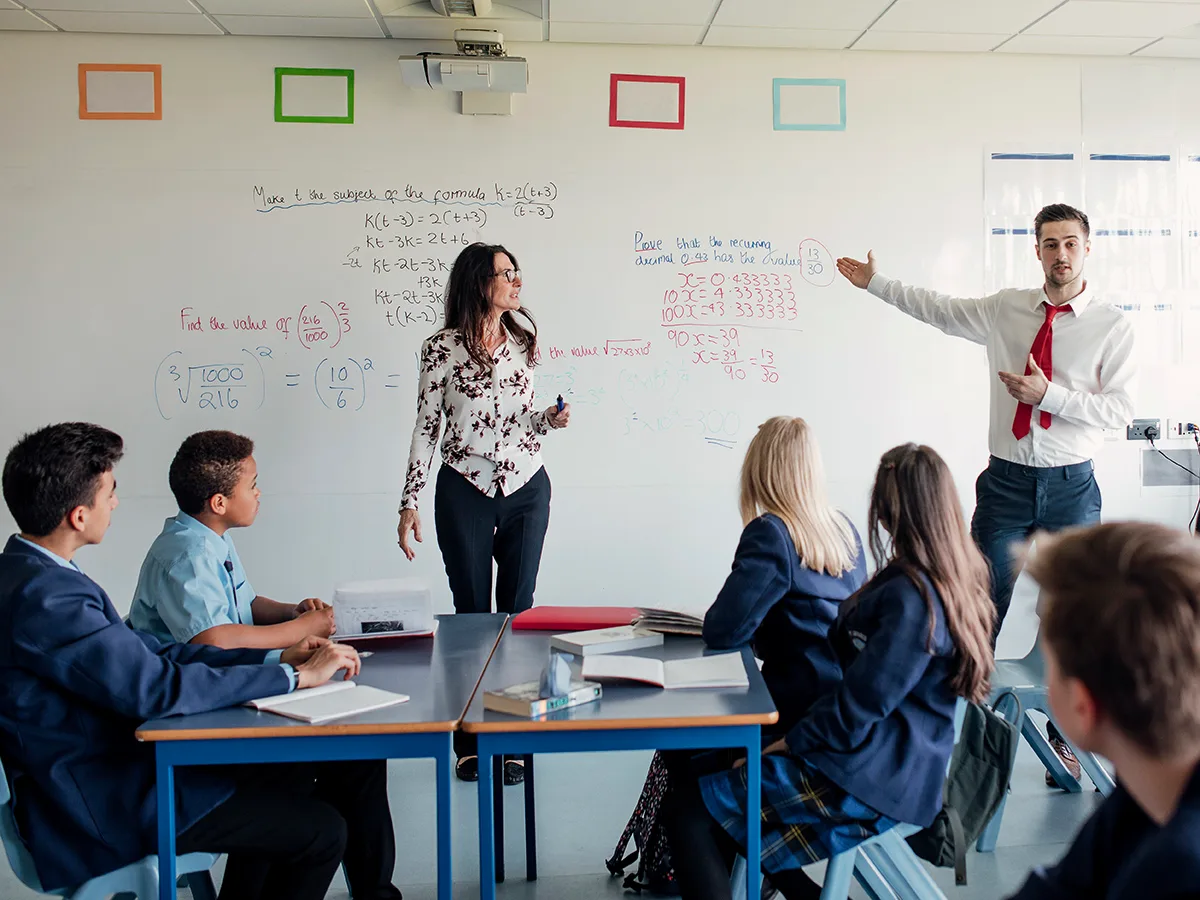What is co-teaching?

By Amanda Morin
Expert reviewed by Ginny Osewalt

At a glance
Co-teaching (or collaborative team teaching) can involve a general education and special education teacher working together.
There are different models of co-teaching.
Co-teaching works best when both teachers are equals in the classroom.
Can having more than one teacher in the classroom help students learn better? That’s the idea behind co-teaching, which is also known as collaborative team teaching. Co-teaching is one way schools make sure that students who need special education services are being taught in the least restrictive environment (LRE). And for most students who learn and think differently, the general education classroom is the LRE.
Here’s what you need to know about co-teaching.
What is co-teaching?
Co-teaching often occurs in inclusive classrooms. (Read about the benefits of inclusive classrooms.) In a co-taught class, general education and special education teachers work together to plan lessons, teach, monitor student progress, and manage the class.
It’s an approach that makes it easier to teach all students the same content and hold them to the same educational standards. That includes students who have Individualized Education Programs (IEPs) and 504 plans.
The benefits of co-taught classrooms
Being in a co-taught classroom has many benefits. Students can spend more time with the teachers and get more individual attention. And with more than one teacher, it’s easier to teach students in smaller groups or one-on-one.
Students have the opportunity to learn from teachers who may have different teaching styles, ideas, perspectives, and experience. It also makes it easier to implement differentiated instruction, Universal Design for Learning (UDL), and personalized learning.
How co-teaching works
Here are the basic models of co-teaching and how each benefits students:
Team teaching. Both teachers plan lessons and work together to teach students.
How it helps students: Students see the teachers as equals with each other. It also gives students the chance to ask questions and get assistance during a lesson. This can be especially helpful for students who struggle with working memory.
One teaches, one assists and/or observes. One teacher actively teaches while the other assists, gives individual help as needed, or observes.
How it helps students: Students know there’s a teacher available to answer their questions or give help in the moment. Also, an observing teacher may collect information about how a student responds to different teaching approaches or about attention and behavior. That kind of data is valuable for IEP teams and for behavior intervention plans. It also allows teachers to discreetly address issues as they come up.
Station teaching. Teachers may be responsible for different parts of the lesson plan. This allows them to play to their teaching strengths.
How it helps students: Teachers divide the students into groups using flexible grouping. As students (or the teachers) move from one station to the other, the teachers can address each group’s specific learning needs.
Parallel teaching. The class is split in half, and each teacher takes one group.
How it helps students: Both groups learn the same thing, but the teachers can use different ways to teach it depending on the needs of the students in their group.
Alternative teaching. One teacher teaches a larger group of students.
How it helps students: The other teacher can work with a small group on a different lesson or give more support to struggling learners.
What to watch out for
Co-teaching doesn’t always work perfectly. It relies on teachers being able to communicate with each other even when they may disagree on the best strategy for teaching a topic or how to grade a certain student. Sometimes one teacher may be more experienced working with students who learn and think differently, so certain students don’t get to know some teachers as well as others.
But it also means there are more people to turn to for problem-solving. If families have trouble communicating with or getting in touch with one teacher, the other may be available and have the same knowledge of the student. And if one teacher isn’t able find a mutually convenient time or way to touch base with families, another teacher may.
Interested in learning more about co-teaching? Explore the six models of co-teaching in more depth.
Key takeaways
The goal of co-teaching is for all students to get high-quality instruction.
Co-teaching can take many different forms, even in the same classroom.
Co-teaching can help teachers implement IEP and 504 plan goals in a general education classroom.
